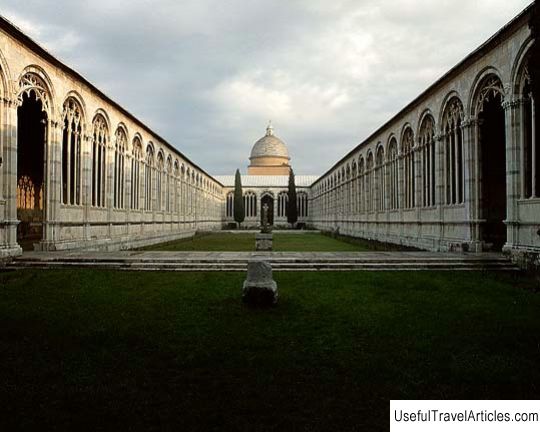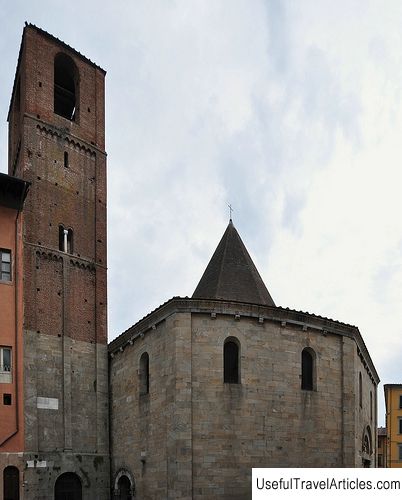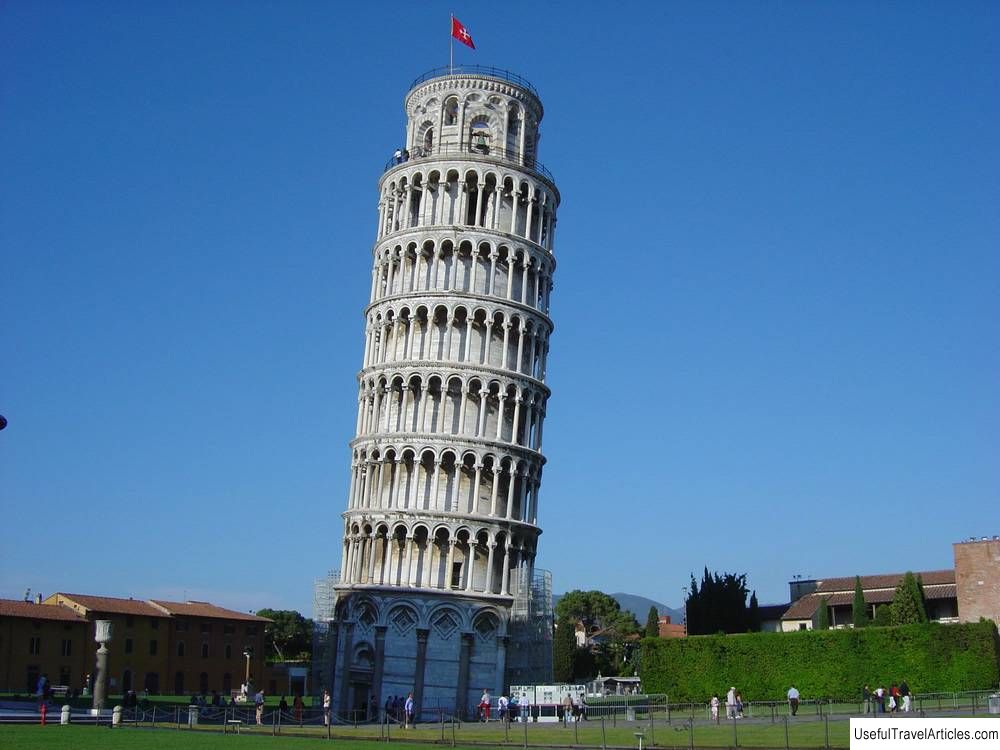Campo Santo description and photos - Italy: Pisa
Rating: 8,2/10 (1655 votes) 
Campo Santo description and photos - Italy: Pisa. Detailed information about the attraction. Description, photographs and a map showing the nearest significant objects. The title in English is Campo Santo. Photo and descriptionCampo Santo, also known as Camposanto Monumentale or Camposanto Vecchio ("old cemetery"), is a historic building located in the northern part of Pisa's Cathedral Square. From the Italian language "campo santo" literally translates as "sacred field" - they say that the building was erected on the ground from Mount Calvary, which was brought to Pisa in the 12th century by Archbishop Ubaldo de Lanfranca, who participated in the Fourth Crusade. According to legend, bodies buried in this land decompose in 24 hours. The cemetery itself lies on the ruins of an old baptistery, which was part of the Church of Santa Reparata, which once stood on the site of the modern Cathedral of Pisa. In order to distinguish Campo Santo from the later founded city cemetery, it is often called Camposanto Monumentale - a magnificent cemetery. The Campo Santo Building is the fourth and last to be built on Cathedral Square on the site of a former cemetery. It appeared here a century after the arrival of the earth from Calvary. The construction of this huge elongated covered gallery in the Gothic style began in 1238 by the architect Giovanni di Simone. He died in 1248 when Pisa was defeated by the Genoese in the naval battle of Meloria. The construction of Campo Santo was completed only in 1464. Initially, this magnificent building was conceived not as a cemetery, but as a church dedicated to the Holy Trinity, but during the construction the project was changed. The outer wall of Campo Santo consists of 43 blank arches. It has two entrances: the right one is crowned with a pretty Gothic ark with a statue of the Virgin Mary with the Child, surrounded by four saints, - this is the work of the second half of the 14th century. Once this very entrance was the main one. Most of the graves are located in vaulted niches in the wall, and only a few are on the central lawn. The inner courtyard of Campo Santo is surrounded by elaborate circular arches with graceful mullions and openwork stained glass binding. There are three chapels in the cemetery. The oldest (1360) is named after Ligo Ammannati, a teacher at the University of Pisa, whose grave is inside. In the Aulla Chapel, you can see the 16th century altarpiece made by Giovanni della Robbia, and the same lamp that existed under Galileo Galilei. Finally, the Dal Pozzo chapel, built by the order of the Archbishop of Pisa Carlo Antonio Dal Pozzo in 1594, is decorated with a small dome. It was here that the relics from the Cathedral were moved in 2009, including two fragments of the Life-giving Cross, a thorn from the Crown of Thorns and a small piece of the Virgin Mary's garment. Once inside Campo Santo there was a huge collection of Roman sarcophagi, but today there are only 84 tombs located near the walls, as well as Roman and Etruscan sculptures and urns. Before the construction of the cemetery, all the sarcophagi were placed around the Cathedral, and then were collected in the center of the meadow. Carlo Lozino, the former curator of Campo Santo, also had a collection of various antique artifacts, which became part of the small archaeological museum created at the cemetery. In July 1944, a fire broke out in Campo Santo as a result of the Allied bombing of Pisa. Since all reservoirs were under control at that time, It took a long time to extinguish the fire - because of this, the wooden beams of the building completely burned out, and the roof melted. The collapse of the roof seriously damaged everything inside the cemetery, destroying most of the sculptures, sarcophagi and old frescoes. Immediately after the end of the Second World War, restoration work began. The roof was rebuilt with the greatest possible precision, and the surviving frescoes were removed from the walls, restored and later returned to their place. Also, drawings and sketches were moved from the building, today they can be seen in the Museum on the opposite side of the Cathedral Square.          Topic: Campo Santo description and photos - Italy: Pisa. |




